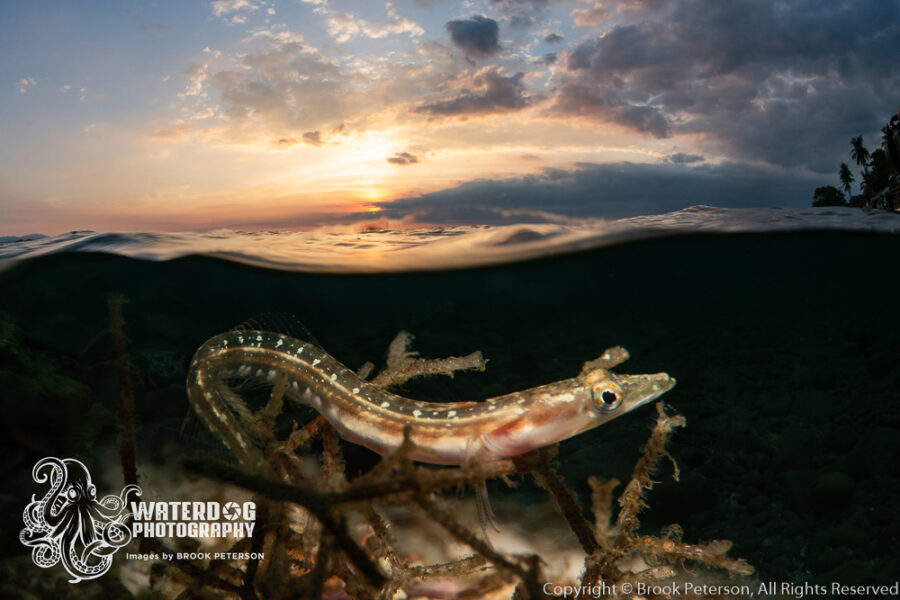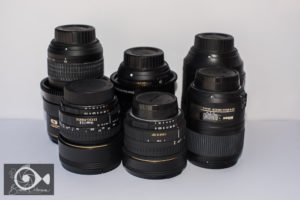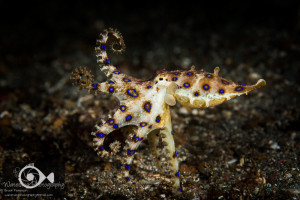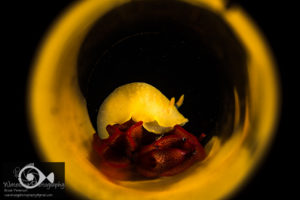
Strut and swagger have long been the tools of attraction. Humans use it in courtship rituals that may seem eccentric and confusing. But the next time you dress to impress a date, just be grateful you don’t have to cannibalize your mate or puff out a fleshy pink balloon on your face. Humans have nothing on animals when it comes to arousing the senses. There is a lot of wooing going on in the animal kingdom, and nowhere is it more evident than in the Sea of Cortez.

Foreign travel came to a standstill in early 2020 and the limitations put on scuba diving were excruciating. But after a few months of dry gills, some possibilities for diving close to home began to develop. As a California citizen, I was able to dive locally under some strict conditions but itched to wander further. An opportunity to take a liveaboard vacation just hours from my home presented itself and, of course, I was on board.
The Quino el Guardian, a liveaboard that services the Sea of Cortez, had room for a few more passengers on its all-women tour. Owned and operated by Dora Sierra, the Quino el Guardian is known for its citizen science expeditions in the Sea of Cortez and Revillagigedo Archipelago (AKA Socorro Islands.) I called a few friends and we soon found ourselves making a short one-hour flight from Los Angeles to Phoenix where we were then shuttled a few hours south over the Mexican border to Puerto Peñasco. The crew took many precautions to keep us healthy, including requiring masks when indoors, frequent hand washing, and safe distancing practices.

The following morning, we awoke in the beautiful Refugio Bay on Angel Island. Anticipation was high as we prepared for our first morning dive. All of us had been land-bound for months and we were eager to put on our mermaid tails. As I back rolled into the cool sea, I couldn’t help smiling, as it felt like walking through the front door after a long absence from home.
At first glance the sea floor appeared barren. However, I had been here before, and knew that all I had to do was be still and wait. Soon, small fish began popping their heads out of holes in the sand, and like a curtain being drawn open at a theater, the show began. This show, it turns out, was a Boylesque.

The first act was performed by an Orange Throat pike blenny known as a “nuptial male.” It is a well-known fact that in many animal species, the male is the most flamboyant. This is true among the small fishes in the Sea of Cortez. Slowly he inched his head out of an empty tube worm casing and glanced toward a few females who appeared to be chatting in the corner. Suddenly, he opened his mouth wide, threw open his dorsal fin and puffed out his orange throat in the most exotic bobbing dance I have ever seen. I am sure nothing screams “I LOVE YOU” like a bright orange throat. The lady fish responded by moving closer and even did a little dance of their own at the edges of the stage.
He was followed by a tiny black fish, no larger than my pinky finger who suddenly exploded into the limelight with his dorsal fin extended. He was beautiful. Commonly called a Gulf Signal blenny, this tiny fish had a colorful dorsal fin that more than doubled his size.

Although I enjoyed the lengthy presentation, a movement in my peripheral vision caught my attention and I turned to watch a blue spotted jaw fish hovering vertically a foot or so above the sea floor. Repeatedly, he would dart down into a hole, then slowly ascend to his position above the sea floor. This fish took on the stance of a perfectly dressed model, turning slowly so that all could see his colorful finery. I ended the dive feeling like I had witnessed something special, and so I had.

I would soon find out that “special” was the name of the game in the Sea of Cortez. Our evening itinerary consisted of a sunset tour by zodiac to see the sea lion colonies. Hundreds of young male sea lions gathered on shore to bask in the setting sun. They held their heads high, each seeming to outdo the next in a contest of pride and size. Females and pups played in the surf, carefree and curious about their human visitors.
Sea lions resemble dogs in more ways than one. The following morning, we were bombarded by the playful pinnipeds as they competed for our attention under water. The younger pups would approach us in groups of three or four and try to make eye contact. Once they saw that we were looking at them, they took on the demeanor of a dog who just found out, “who’s a good boy? You’re a good boy!” They would twist their bodies into crazy positions and even seemed to wag their tails as we paid them closer attention. Their whiskered snouts and long noses also resemble dogs as do their big brown puppy dog eyes. What’s more, they bark.

Sea lions live together in a harem. Some harems are quite large and are protected by a hulking male called a bull. The bull allows his girls and kiddos to play and interact with divers until he decides otherwise. While the harem is playing, he will patrol around them, making sure everyone is keeping a safe distance from the humans. He will also bark as he patrols which is his way of communicating that he is the boss. When his tolerance has reached its end, he will swim by quickly, “drawing” a line of bubbles in the water between the divers and the raft of sea lions. This is his warning that playtime is over. Do not cross the line. We were lucky that the bull in our case was a patient one. He allowed his harem to spend all the time we wanted with them. I believe sea lions and humans alike came away from the experience feeling happy.
Back aboard the Quino el Guardian, we were served a gourmet meal created by the talented chef, Jorge. Because our trip consisted of all-female guests, Jorge took special care to make sure there were plenty of chocolate desserts and other lady-like treats available. This annual women’s trip is dubbed “Wander Women” by its organizers, Dora Sierra, Susan Long, and Diana Hollingshead. The trip celebrates women and aims to raise money to fight breast cancer through the organization, Dive for a Cure.
Dive for a Cure is just one of the beneficiaries of Dora’s endless quest to improve the world she lives in. Her pet project, Heroes Del Mar, aims to educate children from small Mexican villages and give them opportunities to create long term ocean solutions. Without a program to educate these children that there is something greater outside the boundaries of their lives, they may never realize the value of preserving the ocean that they and their families depend on.

Bahia de Los Angeles, is surrounded by such villages. This large bay is well known as a feeding ground for whale sharks. The plankton rich waters attract the gentle giants during the summer months and our itinerary included a day of interaction with them. An independent local company that is certified by the federal government is responsible for the tour and is expected to educate snorkelers on the rules and regulations pertaining to interacting with the sharks. We were treated to six or eight individuals who allowed us to swim with them in small groups for a few hours. When it was my turn, I was delighted that the animals were feeding with their mouths wide open.
Whale sharks are the largest fish in the sea. Although they are sharks, they feed on plankton like a whale. They have tiny teeth, but they don’t use them to catch food. Instead, they syphon plankton rich water through their large mouths, sifting out the food and expelling the water through their gills. They are found around the world, but they are currently on the endangered list. For this reason, there are strict regulations in place for interacting with them.
The last few days of our tour consisted of exploring sites around the Midriff Islands. Giant Jawfish the size of my forearm waited below. They line a tunnel with rocks that looks like a village well in which they live. Their grapefruit size head sits at the mouth of the den and its body is protected underground. These fish are a favorite of the local fishermen and they are not shy of divers. The topography around the islands is rugged and beautiful. Black coral is abundant, as are sea stars and several different types of algae. Schools of fish shimmer in the sun and large trigger fish and angel fish add color to the scene.

By the end of the week, I have a sense of satisfaction and contentment. The ocean is still there, waiting to feed my heart and soul. The fish are still mating, the whale sharks are still feeding, and the sea lions are still playing. I haven’t missed the show, it is as constant as the moon and sun.
When to go: Several liveaboard operations service the area between June and October, some of them moving further south to the La Paz area of the Baja Peninsula during October and November.
Diving Conditions: Water temperatures range from 74 to 82 degrees and can be both temperatures on the same dive. A 5ml wetsuit with a hooded vest is recommended to easily adjust to the changing temperature. Most dive sites are appropriate for beginners to advanced divers although there may be current on some dives.
The sea surface varies depending on the wind and tide changes. If you are prone to sea sickness, you should take the necessary precautions. You are required to carry insurance such as DAN in the event of an emergency.
Operator: Quino El Guardian and Rocio Del Mar are liveaboard operations that have round trip itineraries leaving from Puerto Penasco weekly. The itinerary typically travels to the Midriff Islands and back up with a visit to Bahia de Los Angeles to visit the whale sharks. In late September and October both liveaboards have three two-week itineraries travelling from Puerto Penasco to San Jose Del Cabo or the reverse.
Cost: Typically, you can expect to pay between $260-$285 USD per day. A one week all-inclusive cruise in 2020 starts at $2100 for Quino El Guardian and $3900 on Rocio Del Mar. The cabins on the Rocio Del Mar are typical 2 person cabins with en suite bathrooms. The Quino El Guardian has bunk rooms with four persons per room and four bathrooms which are shared by all guests.
Tips for Travel: Fly into Phoenix airport where you will be picked up by shuttle (booked separately). The border crossing is simple and the drive is about 3 to 4 hours. Optionally, you can drive yourself down to Puerto Penasco. You must purchase a Mexico entry visa either at the border or ahead of time online for $35. Bring extra cash in small increments for tips for the shuttle driver and the independent operators that service Bahia de Los Angeles.
Join me for a workshop! Travel to a great destination where you will have exclusive coaching on your underwater photography. Meet new people, network, try new techniques, and learn with the pros! Click on Travel and Workshops for more information.
Subscribe now!
As always, if you enjoy my images please visit my website, waterdogphotography.com, or give me a like on Facebook at Waterdog Photography Brook Peterson. Don’t forget to follow me here at waterdogphotographyblog and please feel free to share on Facebook or other social media.
My photographs are taken with a Nikon D850 in Sea and Sea Housing using two Retra Pro Strobes.
All images and content are copyright protected by Brook Peterson and may only be used with written permission. Please do not copy or print them. To discuss terms for using these images, please contact me.
© Brook Peterson 2021
















